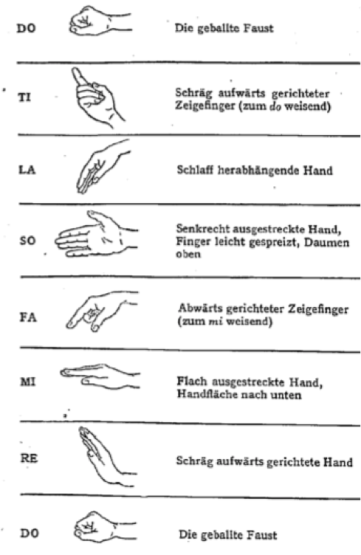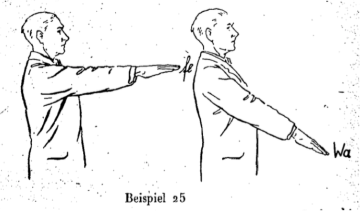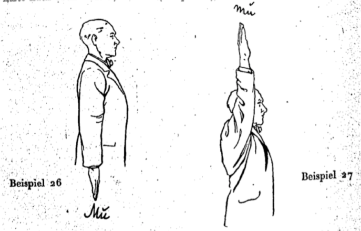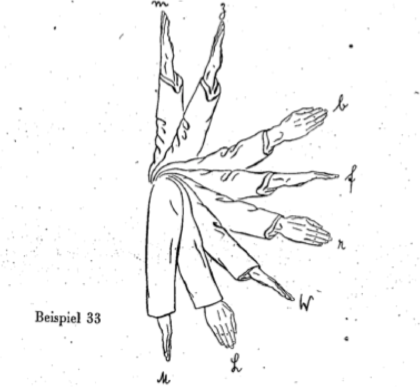Anicia Timberlake
What can music pedagogies for children tell us about how grown-ups think about music? My recent work examines the politics of classical music in socialist East Germany (GDR) through the lens of children’s music education. Officially, the doctrine of socialist realism demanded that citizens of the new socialist society should perform and listen to new music that emphasized socialist ideals. Stylistically, this music was meant to both draw from the German classical tradition and also move beyond it. But there’s a difference between theory and practice: East German policymakers dictated what was to be sung, not how it was to be learned. They rarely stepped into the nation’s classrooms, where teachers often operated by a different set of assumptions. I look at children’s pedagogies to see how music was taught to children in practice, and, by extension, to learn about how the people in charge of bringing music to the state’s youngest citizens conceived of it.
As the Soviet occupied zone (and later the GDR) sought to restructure its educational system, many teachers—not policymakers—looked to the progressive pedagogies (Reformpädagogik) of the late nineteenth century and the Weimar era for inspiration, believing that the utopian aims of the earlier time could be taken up again and, perhaps, fulfilled. Many of these pre-war German progressives used aspects of English tonic sol-fa, a singing pedagogy developed in the mid nineteenth century that used syllables, hand gestures (cheironomy), and a simplified notation system to teach adult amateurs to read music. In adapting tonic sol-fa for children, they jettisoned the simplified notation to focus solely on the syllables and the cheironomy.

Fig. 1: Wilfried Friedrich, Heinrich Martens, Richard Münnich, and Karl Rehberg, Tonika-Do, Eitz, Jale (Berlin: Volk und Wissen, 1949), 8.
Tonic sol-fa (likely already familiar to many Western readers of this blog) is a movable-do system that sets a major scale to adapted Guidonian syllables: do re mi fa so la ti do. East Germans used the following cheironomy (Fig. 1).
Many teachers used the system as outlined here.[1] Others developed their own solmization (or solfège) systems meant to teach everything from music literacy to absolute pitch.
Heinrich Werlé’s Solfège Method
In 1949, as part of this trend, the teacher and choral conductor Heinrich Werlé published a guide to his own solfège method, developed on the basis of 40 years of working with children.[2] The method was meant to let what he considered to be the child’s natural musical tendencies unfold by themselves, according to their own pace. Werlé claimed that all newborn infants cried at, or close to, the pitch a’, which formed the tonal center of their childish lives. Children up through the age of 10 continued to produce the pitch spontaneously and intuitively: “not through thinking,” he emphasized, but rather “out of their bodily and spiritual instinct [Antrieb]” (3). From the infant’s scream, Werlé also deduced the inborn nature of diatonic harmony. Careful observation of the infant revealed that she hit a second note when breathing in between cries. This note was always higher by an octave, a fifth, or two octaves, proving the primacy of the intervallic relationships that structured tonal music. The relationship between tonic and dominant was fundamental to the infant’s body, as it was to the world of physics. Thus, Werlé concluded, “the foundation for harmony is already there […] the choice of so-called primary overtones indicates […] that a process is unfolding subconsciously which points back nearly to the hour of music’s birth within acoustics” (5). From these earliest tones, toddlers would go on to improvise songs that used the notes of the tonic triad; children of five or six would “naturally” add the sixth scale degree.
Werlé’s solmization system was meant to cultivate from within those musical tendencies that he believed to be present within the child since birth. Like tonic sol-fa, his used syllables and cheironomy to activate children’s muscle memories: Werlé, like other solfège practitioners, believed that children’s physical abilities developed faster than their rational brains. And like tonic sol-fa—at least as it was practiced in East Germany—his system focused exclusively on diatonic repertoire.
But there, the similarities between the methods ended. Teachers of tonic sol-fa generally started the youngest learners with the pitches so and mi, a falling third common to children’s songs. Children first learned the hand signals for just those notes; they then added (in order) do, la, re, ti, and fa. Thus the method encouraged children to learn songs based on a major triad and a pentatonic scale before moving to repertoire that used a full diatonic scale.
In contrast, Werlé started with the single primal pitch, a’, to which he assigned the syllable fe and a helpful mnemonic gesture (Fig. 2).

Fig. 2: Heinrich Werlé, Musik im Leben des Kindes, 54.
This gesture and syllable, which worked together as a “unity,” formed the basis for children’s tonal education. Werlé recommended that the learning child train himself by suddenly singing fe with his arm outstretched and checking the pitch with a tuning fork. The child would slowly rediscover, or simply refine, the natural tonal center with which he had been born.
What about that fe gesture?
When I’ve given talks on this method, the fe gesture—right arm outstretched parallel to the ground—always prompts uncomfortable giggles. The resemblance to the Hitlergruß is striking for North American audiences. Curiously, none of Werlé’s contemporaries commented on it. Perhaps, to their eyes, the gestures weren’t actually that similar, as the Hitlergruß is angled upward. (Indeed, Werlé’s system studiously skips over the danger zone: when the arm is held at ca. 30 degrees above level, the palm is rotated so that it’s held perpendicular to the ground.) Or the similarity may have simply been irrelevant: East German music educators were willing to overlook the fact that many of the Weimar-era pedagogies they were intent on using had been used throughout the Nazi era as well. From the teachers’ perspective, the gestures and syllables might have seemed apolitical, being devised to teach skills and not any propositional content; perhaps the gesture’s context was too innocent to raise eyebrows.

Fig. 3: Heinrich Werlé, Musik im Leben des Kindes, 54.
The next steps were a guided exploration of the tonal space around a’, already familiar to children from their spontaneous musical improvisations. First, children were to proceed to f#’ (a minor third below a’), given the syllable Wa and a gesture similar to fe but at an angle (Fig. 3).

Fig. 4: Heinrich Werlé, Musik im Leben des Kindes, 55.
This step was nearly automatic, Werlé wrote, as f#’ was a “primary tone of sympathetic resonance […] already present in the subconscious as we sang fe, as it is one of the notes whose sum produces fe.” (The falling minor third, of course, was central to tonic sol-fa education as well, but not for psychoacoustic reasons: teachers simply noted that most children’s songs and speech tended to feature the interval.) Next the teacher was to drop his hand to his side, producing d’, or Mu (Fig. 4).
The rest of the pitches of the D major scale would follow slowly over time. Werlé assigned them the syllables Mu Ro Wa la fe bü zu mu,[3] and the following gestures, in which the arm traces a 180 degree arc from bottom to top, and for each step upwards, the palm alternates between being held parallel and perpendicular to the ground:

Fig. 5: Heinrich Werlé, Musik im Leben des Kindes, 63.
The whole-arm gestures were meant to indicate to children the relative height of pitches in a way that a purely hand-based cheironomy of other solfège systems could not. The choice of D major as the center was determined by the child’s natural inclinations; children were never to sing in another key.
Why does this matter?
All children’s pedagogies negotiate between the material to be learned and the abilities of the growing child. Thus the design of pedagogies can tell us what aspects of music are believed essential (the material to be learned), who the child is when she begins learning (what mental and physical skills are believed abilities that are natural and easy), and the processes by which the gap between the two can be closed.
Tonic sol-fa seems to assume that children are born musically unformed, and can be trained to be proficient in a complex musical system through methods tailored to their developmental stage. Werlé, by contrast, believed that children were born with all the elements of tonal harmony already in place—complete with mostly reliable absolute pitch—and that the teacher’s job was to help them strengthen their natural abilities. The hand gestures and syllables were mnemonic devices; they did not represent skills to be learned from scratch. Werlé also cautioned the teacher against “learned, theoretical concepts of music” (“[das] lernhaft musikalisch Begriffliche”) (34), which would overtax the children’s memories, destroying their organic relationship to music. Thus the teacher’s job was less to teach children than to preserve for them a space in which they could remember that which they already knew.
Werlé moreover seemed to believe that the nature of music itself ought to be identical to the capabilities with which the child was born: no more, no less. For every childish ability he described, he pointed to a corresponding acoustic phenomenon. The intervals between children’s cries and breaths were reproduced in the overtone series, and the ease with which children sang a falling minor third (a’-f#’) was due to that same overtone relationship. Thus he implied that tonal music was the only natural form of music, not only because of its acoustic resonances (and here he ignored all the questions of tuning and temperament that such statements often prompt) but also because of its organic presence within the childish body.
This firm conviction that children can produce tonal music organically—not only because they hear it from a young age, but because they are essentially born singing it—is a funny fit for a socialist nation. Marxist theories of history emphasize that societies, and the people who live in them, change qualitatively over time; most East German theories of education therefore shied away from anything that ascribed too much importance to an “inborn” and unchanging human nature. The idea that there could be a music that was biologically best for children was therefore distinctly un-Marxist. The method, however, still enjoyed moderate success: it was taught at several pedagogical institutes, and reportedly had a good reputation in East Germany (and in West Germany as well).[4]
To say that Werlé’s method was un-Marxist is not to say that it was explicitly anti-socialist, or even merely apolitical. The idea that tonal music is baked into human nature has obvious political ramifications. To close, I’ll draw out just one. The method was clearly designed to be German: instead of relying on internationally well-known tonic sol-fa syllables, Werlé chose a new set—Mu Ro Wa la fe bü zu mu. (In this, he might have been following the lead of the teacher Richard Münnich, whose 1930 solmization system Jale used phonemes particularly useful for singing in German.) Werlé had explained that the vowels he chose were physiologically determined: the progression u – o – a – e – i moved the child’s larynx upwards, easing the singing of the ascending scale (56). While it is possible that physiology also prompted Werlé to substitute “i” for “ü” – the mouth could be held in the same position for bü and zu, and “ü” might be easier to sing than “i” – the vowel “ü” at the same time reinforced a distinctly German sound world. Similarly, the syllables wa and zu relied on a knowledge of German orthography. These markers made the method essentially unexportable. But even more, there are hints of a familiar chauvinism in a method that uses specifically, even exclusively, German-language sounds as an expression of an innate, universal human musicality. Policymakers may have called for new music for a new society, but teachers delivered pedagogy that traded on older notions: tonality is universal, and universality is German.
[1] East German pedagogues traced their solfège lineage directly back to the efforts of Sarah Glover (1845) and John Curwen (1885) in Victorian England. They made no mention of French solfège or of the Kodaly method. For more information on English tonic sol-fa, see Charles McGuire, Music and Victorian Philanthropy: The Tonic Sol-fa Movement (New York: Cambridge University Press, 2009). Other German solmization systems common in East Germany included Carl Eitz’s Tonwort (1911), a fixed-do system designed to teach absolute pitch and account for chromatic tones and modulations, and Richard Münnich’s Jale (1930), a movable-do system that operated much like tonic sol-fa but with different cheironomy and syllables designed to fit the German language.
[2] Heinrich Werlé, Musik im Leben des Kindes (Dresden: Ehlermann, 1949).
[3] Werlé indicated that only the first three syllables were to be capitalized, but gave no explanation.
[4] Letter from H. Becker to E. Zaisser, 19 May 1950, DPZI 14.
Anicia Timberlake researches the politics of music education in postwar East and West Germany. She is on the musicology faculty at the Peabody Institute of the Johns Hopkins University.